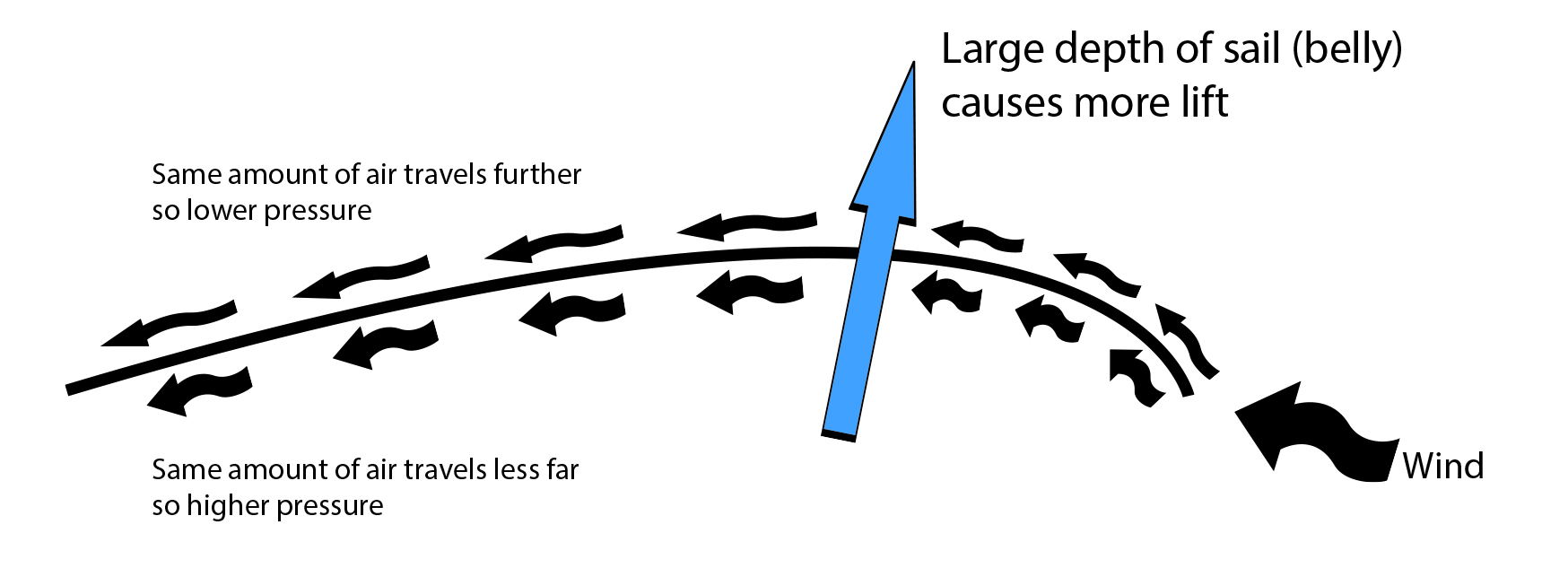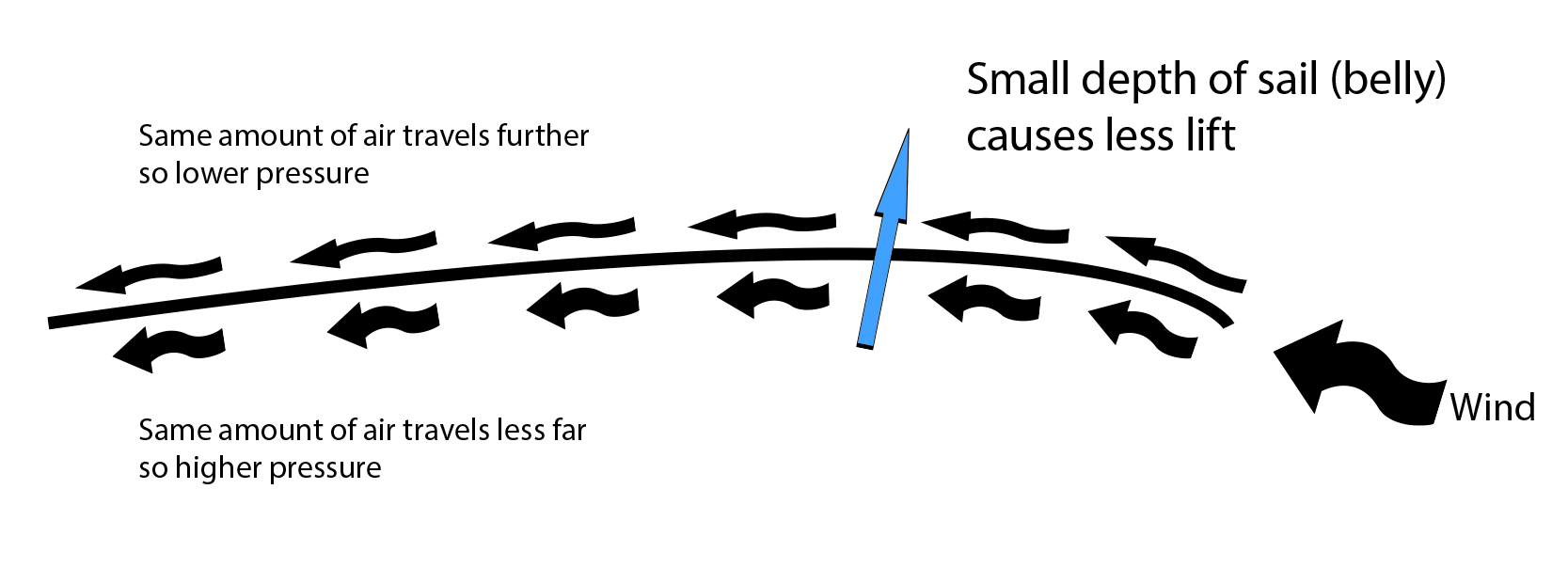Jib Sail Shape
Book Extract
JIB SAIL SHAPE: BELLY (DEPTH)
Sail depth, or belly size, controls the power in the sail, and hence how much lift and drag is created.
- The sail is at its most powerful, and creating most lift, when its belly is at its biggest setting. However, sailing with a big belly in high winds creates too much drag, which causes the boat to heel over, become uncontrollable and slow down.
- A big belly is suitable for light winds and a small belly is suitable for strong winds. You reduce the size of the belly as the winds get stronger but you only start reducing the belly as the forces of drag affect your performance and start to slow you down. As the wind drops in strength, you increase the belly again.
There are three sets of controls that affect the overall size of the belly: the rig, the jib car and the halyard.
- Rig tension limits overall power and cannot be adjusted whilst racing. The backstay also limits overall power (within the boundaries set by the rig tension) but can be adjusted whilst racing. The harder the backstay is tensioned, the tighter the forestay becomes and so the flatter the sail becomes. The looser the backstay, the looser the forestay and so the more powerful the jib.
As jib trimmer, you only have direct control over the jib car and halyard.
- Moving the car forward provides more belly and therefore more power.
- Moving the car back provides less belly and therefore less power.
- Tightening the halyard flattens the sail and so reduces power. Loosening the halyard increases the depth of the sail and creates more power. The halyard also affects groove as you will see later on.
As a member of a team of sailors, you should ask the skipper before you start sailing what the rig tension is being set to. After all, it affects you as well as the rest of the boat.

Large depth of sail (belly)causes more lift

Small depth of sail (belly) causes less lift
A deeper sail (bigger belly) produces more lift and drag. A sail with a smaller belly creates less lift and drag. Although the lift is welcome, in higher winds the drag overpowers the boat and makes it uncontrollable and slow. Therefore, we vary the depth of the sail according to the wind strength.

A loose rig creates a curve in the forestay and depth in the sail providing more power

A tight rig creates a straight forestay and less depth in the sail providing less power
Although the difference between a loose and tight rig is hard to see, the effect is significant in terms of the overall power the sail generates. A quick and easy way to check the rig tension’s effect on forestay tension, and therefore overall power in the jib, is to grab the forestay and push against it. A tight forestay will hardly yield whereas a loose forestay will move appreciably.
When you are sailing, you should make it your business to know how tight the rig is. As you will see, rig tension not only affects the overall power in the sail but also where the belly is, but more on that later.
© Not to be reproduced without written permission from Fernhurst Books Limited.
Jib Trimming is written by Felix Marks. Felix is an enthusiastic sailor who has sailed British and Australian waters and has a great understanding of sails.